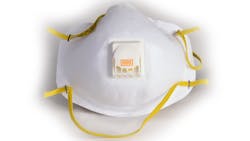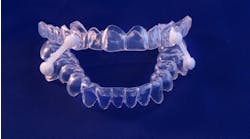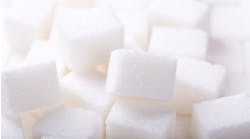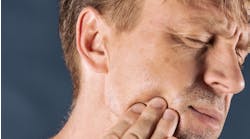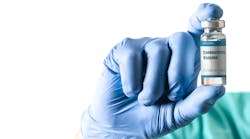Decontaminating N95 respirator masks after SARS-CoV-2 exposure
The COVID-19 pandemic has created a shortage of N95 respirators worldwide in both the medical and dental fields. Because N95 respirator masks are designed for one use only prior to disposal, concern has arisen over the forced need for health-care workers to use these masks for multiple patients and extended periods of time (hours, days, and sometimes weeks). In addition, many different methods have been created by individuals looking to add protection to traditional surgical masks during the N95 respirator mask shortage. See “A technique to improve the viral protection of a procedure mask in absence of an N95 shield respirator”.
N95 decontamination methods have been described in the literature for bacterial spores, bacteria, and influenza A with regard to filtration efficiency and seal, but not the virus that causes COVID-19, SARS-CoV-2.1 Studies on various decontamination methods have shown adverse effects on both filtration and seal of N95 respirator masks, causing them to become ineffective after decontamination.2
A new study in the Journal of Emerging Infectious Diseases looked at four decontamination methods on N95 filter fabric that had been exposed to SARS-CoV-2.3 The decontamination methods included vaporized hydrogen peroxide, dry heat at 70 degrees Celsius (158 degrees Fahrenheit), ultraviolet light (UV-C), and 70% ethanol spray. Although all four methods eliminated detectable viruses from the N95 fabric, they altered the filtration and seal in different ways.
Researchers found that vaporized hydrogen peroxide was the most effective decontamination method and killed all detectable viruses after 10 minutes, without affecting integrity of the mask fabric for use up to three times. UV-C light needed 60 minutes of exposure to the mask to kill all detectable viruses, with similar effects on mask integrity (use up to two or three times). Dry heat needed 60 minutes of exposure to mask fabric to kill all viruses, with effects on mask integrity after two uses. Lastly, 70% ethanol could kill all detectable viruses but affected the integrity of the mask after one use.
In conclusion, vaporized hydrogen peroxide and UV-C light allowed N95 respirator masks to function for three uses, while dry heat allowed two uses. 70% ethanol was not recommended. The authors finished by stating that anyone decontaminating an N95 respirator mask should carefully check the fit and seal over the face before each reuse.
Related articles
- Downloadable COVID-19 screening form for dental patients
- Salivary diagnostics for COVID-19 prove as reliable as nasopharyngeal swab in new study
- CDC revises guidance on isolation after COVID-19–positive test
- Uncontrolled inflammation: The real problem with COVID-19 severity
Editor’s note: This article originally appeared in Perio-Implant Advisory, a newsletter for dentists and hygienists that focuses on periodontal- and implant-related issues. Perio-Implant Advisory is part of the Dental Economics and DentistryIQ network. To read more articles, visit perioimplantadvisory.com and subscribe at this link.
References
- Lin TH, Tang FC, Hung PC, Hua ZC, Lai CY. Relative survival of Bacillus subtilis spores loaded on filtering facepiece respirators after five decontamination methods. Indoor Air. 2018;28(4):754-762. doi:10.1111/ina.12475
- Viscusi DJ, Bergman MS, Eimer BC, Shaffer RE. Evaluation of five decontamination methods for filtering facepiece respirators. Ann Occup Hyg. 2009;53(8):815-827. doi:10.1093/annhyg/mep070
- Fischer RJ, Morris DH, van Doremalen N, et al. Effectiveness of N95 respirator decontamination and reuse against SARS-CoV-2 virus. Emerg Infect Dis. 2020;26(9):2253. doi:10.3201/eid2609.201524
